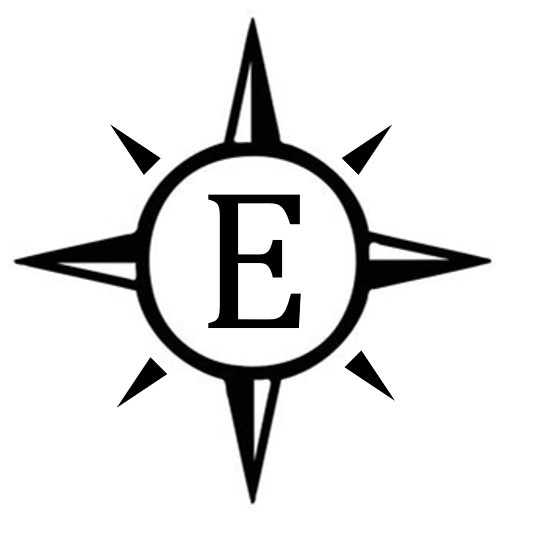|
 EXPLORE & OBSERVE EXPLORE & OBSERVE
|
| |
Edition #43: If one is good, three is better | |
|
Plus deep-sea explorers, Mars robots, private flights to space, mischievous California Condors, and this picture of a trio of research vessels off the coast of Ireland. |
| |
|
#01 TWILIGHT ZONE
+ A trio of research vessels rendezvoused in the North Atlantic on an expedition to study the ocean twilight zone, a region of the sea roughly 600 to 3,300 deep where very little sunlight penetrates. Some of the goals of the mission are to study how carbon moves through the top layer of the ocean and understand more about the daily migration of animals up and down in the water column. The research team "consists of 150 scientists and crew from more than 30 governmental, university and private non-governmental institutions" and they will use "a total of 52 high-tech platforms, including several autonomous vehicles" to take simultaneous measurements of the ocean. The ambitious project runs through May 21st and you can catch up on daily updates here.
+ The National Oceanic and Atmospheric Administration, with collaborators from NASA, the Woods Hole Oceanic Institute (WHOI), and the University of Rhode Island, is leading a technology demonstration expedition off the coast of the southeast United States about the Research Vessel Okeanos Explorer. That's engineer speak for "we have some fancy new equipment and want to see it works right." In this case, the star of the show is a Terrain Relative Navigation (TRN) system developed by NASA's Jet Propulsion Laboratory and installed on WHOI's Orpheus submersible. With TRN, the submersible will be able to navigate using features it finds on the seafloor. At the same time, the science team will test out new methods to collect Environmental DNA (pieces of DNA shed by things living in the water) and map the bottom of the ocean. The expedition lasts through May 27th and you can watch live feeds from the ship and submersible here. |
| |
|
#02 THE RIGHT STUFF
+ "Though she didn’t watch from inside the bathysphere [deep water submersible], she often would put on a diving helmet, tie her brushes to a palette of oil paints, and drag her canvas underwater to paint and find inspiration. The view was a 'fairyland,' she wrote later." Although William Beebe and Otis Barton were the first people to study the deep ocean from a submersible, their observations and sketches came alive thanks to women like Else Bostelmann, trained scientists in charge of categorizing species, operating communications lines, transcribing observations, and in Bostelmann's case, sharing the wonders of the deep sea through dramatic paintings.
+ "When kids ask me 'what's your greatest discovery,' I always tell them it's the one that I'm about to make." Robert Ballard isn't the type to slow down even after sixty years as one of the leading ocean explorers in the world. In this interview, he discusses his childhood dream to be like Captian Nemo, a new disclosure that his discovery of the Titanic was linked to the search for a sunken US nuclear submarine, and plans for his very own research vessel appropriately named The Nautilus. |
| |
|
#05 VESUVIUS
+ A skeleton unearthed at Herculaneum, a city near Pompei that was also engulfed in the infamous Mt. Vesuvius eruption, may have been a senior officer in an ill-fated rescue mission launched by historian and naval commander Pliny the Elder. The soldier carried with him twelve silver and two gold denarii coins, "a highly decorated gold and silver belt, and a sword with an ivory handle indicating he was no ordinary soldier." |
| |
|
#07 A GOOD BOOK
For the next few newsletters, we're featuring some excellent non-fiction children's books reviewed by Kirsten H., a librarian passionate about children's and young adult literature. Although these books are made for kids, I've found them to be quite enjoyable for adults too!
+ It can be hard to grapple with your place in the universe, both literally and metaphysically. Jason Chin’s latest picture book Your Place in the Universe helps children wrestle with the physical size of the cosmos and perhaps helps them with metaphysical location along the way. Using the size of an average eight-year-old (50 inches or 127 centimeters, if you are curious) as a starting point, the book moves from ostrich (two eight-year-olds) to giraffe (four eight-year-olds), to trees, buildings, mountains, and into space. Using well-labeled diagrams, the book explores the solar system, the galaxy, and eventually the universe. Just as the book risks going too abstract with the universe, it returns the original eight-year-olds and their telescope, discussing what we know about Earth, stating that, “It’s the only planet we know of with kids who can look up and imagine…their place in the universe.” An excellent book for budding astronomers, or for those who might be. |
| |
|
That's all for this week! You can respond to this email to tell me about anything you liked or didn't like, tell me about a project you're working on, or suggest a story. You might also forward this email to a friend so they can subscribe too!
- Evan Hilgemann |
| |
|
This newsletter was produced as a private venture and not in the author's capacity as an employee of the Jet Propulsion Laboratory/California Institute of Technology or of Griffith Observatory. Any views and opinions expressed herein or on exploreandobserve.com are his own and not those of his employers. |
|
|
|